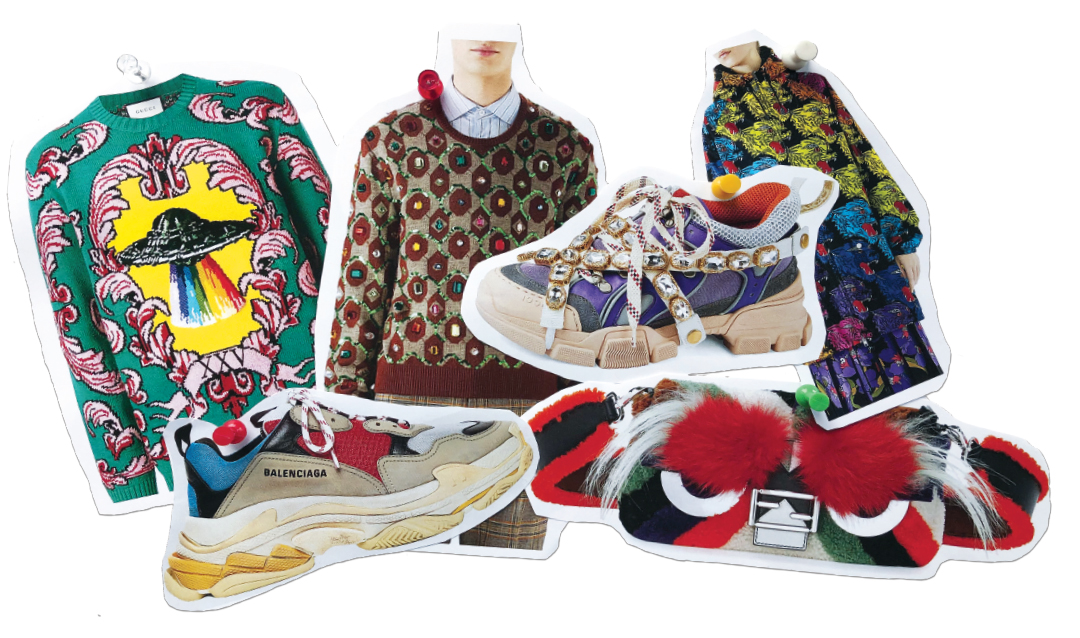It seems counterintuitive: People generally view unattractive products negatively, even in markets such as industrial products. Yet fashion is a little different, researchers say. Fashion communicates one’s identity and personality, social group membership and status.
“Critically, consumers are aware of this and understand that, more so than other categories, fashion choices influence how others perceive them,” says Cesareo, assistant professor of marketing. “Thus, the aesthetics of fashion really matter.”
And luxury is more than just expensive fashion. Consumers use luxury to signal a specific set of attributes, generally those of wealth and status. Because of this, researchers say, signaling these attributes is a large part of luxury’s function. People perceive luxury designers as artists, visionaries, tastemakers and innovators, with the ability to shape tastes and preferences.
“Consumers trust a product from a luxury brand, assuming it has positive qualities, rather than questioning it,” Cesareo says. “If something is from a luxury brand, then it is fashionable.” Thus, luxury brands don’t need to follow prescribed norms. Consumers who perceive an item as luxurious also assume that it costs more.
To test their theory, Cesareo and colleagues conducted a series of studies with university students, online Mechanical Turk workers and Amazon customers to consider a range of product categories and multiple luxury and non-luxury brands. They manipulated the aesthetics of real luxury and non-luxury products, as well as a single product styled in different ways, and included more than 10,000 Amazon products. Amazon sales data included more than 20 luxury brands and 200 non-luxury brands
at multiple price points.
They found that, among non-luxury brands, consumers are more likely to purchase attractive products, but among luxury brands, ugly products are equally as likely to be purchased.
“What our studies showed is that perceptions of fashion-forwardness—of being in the know—can outweigh aesthetics when choosing a luxury brand item,” Cesareo says. “Ugly has somehow become a signal of taste, of the good life, of luxury and prestige.”
For example, in one study the researchers incorrectly buttoned up a jeans jacket, presenting it as “unattractive.” Yet, when it was perceived as a luxury product, more shoppers chose it. “This suggests that it is not just the ugliness of the product itself that can signal ‘fashion-forwardness’ for a luxury item, but also the way in which it is presented to consumers,” the researchers say.
The research, which draws on costly signaling theory, is the first to identify a context where ugliness offers positive qualities. It reveals a way in which consumers’ response is different across contexts: luxury vs. the rest of fashion. The findings identify distinctive ugliness as a powerful aid in signaling, as powerful as a loud luxury brand logo.
How Does This Work?
Distinctive ugliness is eye-catching, arouses attention
and is memorable, which helps it to be noticed and identified as luxurious. An overtly ugly item also suggests intention, meaning it is not a matter of misjudgment or a mistake, Cesareo says.
“While nondistinctive ugly looks ill-fitting, distinctive ugly suggests commission, an intentionality on the part of the designer or celebrity,” she says. “Their intentionality suggests it was a deliberate choice that must be saying something about how fashion forward the person wearing the item or the person who put the outfit together really is.”
The distinctively ugly aesthetic implies a product wasn’t purchased for its attractiveness, but in spite of its lack of attractiveness.
“Without attractive aesthetics, the implication is that it must have been purchased for the [luxurious] brand,” Cesareo says. An aspect of luxury is communicating cost or sacrifice to gain status, which can be “anything given up,” from financial cost to sacrificing aesthetics.
Cesareo found that among non-luxury brands, people always choose pretty. For luxury brands, it’s 50-50. “There is no advantage to being pretty in luxury,” Cesareo says. “Or, to flip it, no disadvantage to being [distinctively] ugly.”
The findings have ramifications for both luxury and non-luxury brands.
Distinctively ugly as a signal of luxury and fashion-forwardness has monetary value. “The fact that consumers see distinctively unattractive luxury products as more expensive and are equally as likely to choose them as their more attractive counterparts suggests that managers may be able to charge slightly more for a distinctively ugly luxury product without discouraging customers,” the researchers say.
The findings were consistent across populations, which is noteworthy, Cesareo says, as luxury shoppers make up only 5% of consumers.
Yet a larger audience, beyond fashion insiders, was able to identify and understand the signal and meaning of the distinctively ugly aesthetic.
“This work reveals a cue, much like a large brand logo, that is apparently understood fairly universally,” she says.
Since the ugly premium doesn’t apply for mainstream, fast-fashion brands, they shouldn’t copy these looks, Cesareo says, though they could partner with a luxury brand or signal with statements such as “as seen on the runways” that a distinctively ugly aesthetic might be perceived as luxury.
WHY IT MATTERS: Identifying the “ugly luxury premium” adds to the understanding of luxury. Consumers perceive distinctive ugliness as a signal of luxury, and view distinctively ugly luxury products as more fashion-forward and expensive, choosing them as often as beautiful ones.





